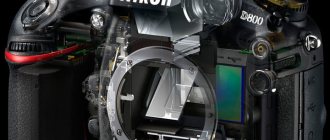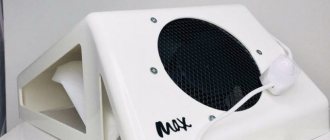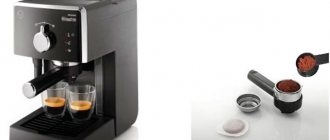Why did monitors with curved screens appear?
They were invented to provide viewers with improved picture quality. The main feature is achieving the effect of maximum immersion, which allows you to see familiar graphics in a new way. The first curved monitors were used primarily by gamers, but now they are also chosen for entertainment, watching modern movies, and just for work.
Monitors with a curved surface can use peripheral vision to a greater extent than flat monitors. The result is a so-called deep immersion effect. Sitting in front of the screen, the viewer seems to notice that the screen has boundaries. This effect is due to the fact that the sides are directed inward, so the distance from all the points that make up the image to the eyes remains the same. In addition, the radius of curvature is calculated by the developers to match the characteristics of human vision.
Curved or flat monitor, which one is better to choose?
The curved monitor differs from many flat screens precisely because of its unusual design. At the same time, similar monitors also received different bending radii for convenient image perception at certain distances. The curved display follows the field of view of the human eye. We are talking about an arc that faces forward. Thanks to this, we have peripheral vision, since we partially see the picture on the sides. Therefore, the bend of the monitor screen not only resembles our vision, but also creates the most comfortable viewing conditions. All this is officially confirmed by medical research conducted by Harvard Medical School. Thus, it was found that curved monitors cause four times less problems associated with blurred vision than flat displays.
Pros and cons of a curved screen
Due to its design features, such a monitor has many advantages over a regular one. First of all, it is a wider view and an image that is free of distortion . Viewing content on a curved screen is compared to viewing in 3D, despite the fact that the image is two-dimensional. This effect occurs due to increased depth perception. One of the most important benefits of curved screens is the reduction of distortion. In this case, peripheral vision is also involved, and the perception of the picture becomes more natural.
The image quality across the entire monitor area remains high, color rendering and contrast do not deteriorate at the edges of the matrix, so it becomes easier to concentrate, which reduces eye strain by up to 60%. Defocus of vision occurs 4 times less often than when using a direct screen.
Curved screens also have disadvantages .
The main one is that all the listed advantages disappear if you are not directly in front of him and not in your comfort zone. Contrast and viewing angles deteriorate, and optical distortions appear. To prevent your eyes from getting tired, you need to sit no further than a certain distance from the screen. If we compare both types of monitors, curved ones are much more expensive, which is explained by the complexity of production.
Price/benefit and our final word
As you've probably guessed, we're not fans of curved screens. For the most part, this technology creates more problems than benefits, and several advantages do not cover up the much larger number of objective disadvantages. In addition, such TVs are much more expensive than their flat-panel counterparts. Given the weaknesses of the curvature, we're not sure the price for these TVs is justified.
On the other hand, fans of manufacturers like Samsung, LG and Panasonic have little choice if they want to buy a flagship, since all the best models come with curved screens.
This factor, in part, creates a false impression among potential buyers that the best TVs are those with curved screens. They see that the manufacturer has announced the next flagship, and this flagship has a curved screen, and the consumer begins to think that curvature is cool.
To summarize, I would like to say that the curved screen does not do as much for the TV as we would like, not providing the user with what he expected when buying a curved TV. Yes, it slightly improves the viewing experience, but just a little, and only on large screens. But if you are fascinated by the appearance of such TVs, or just want to be trendy, then go ahead.
17 Sep 2021 S.Denchuk 34077
Share this post
Discussion: there is 1 comment
- Ivan:
10/04/2016 at 10:54Bent TVs certainly look cool, you can’t argue with that!
Answer
For what purposes is it better to choose a curved monitor, and for what purposes is it better to choose a regular flat one?
High-quality curved monitors can be purchased for both home and work use. They allow you to better organize your workspace, work more carefully and longer. For gamers and movie lovers, immerse yourself in a virtual world without having to wear virtual reality glasses. 16:9 and 21:9 aspect ratio screens can produce images with an effect similar to that of IMAX.
Monitors with improved performance are convenient for entertainment, work at home and in the office. For those who spend a lot of time sitting at the computer, a comfortable curved monitor will truly be the best solution.
Features of new products with curved display
Since its invention, the TV display device has undergone several changes. The bulky convex CRTs were replaced by a flat matrix. The concave screen of television receivers and monitors was borrowed from cinemas, where the viewer could enjoy the image with the effect of presence.
The main feature of a TV with a curved screen is the bend from the center to the edges towards the viewer, which is achieved mechanically. In this case, the matrix is constantly in a stressed state, increasing its fragility. To achieve the effect, you have to sacrifice the thickness of the protective coating. In addition to liquid crystal technology, organic light-emitting diodes are used here, which, unlike LCDs, do not require backlighting. The rejection of liquid crystals is due to their dependence on the viewing angle.
Advantages over flat models
To understand which is better – a flat or curved screen, you need to familiarize yourself with the advantages of the latter:
- Improved contrast, brightness and color rendering. A similar effect is achieved through the use of OLED technology.
- Increased viewing angle. In the curved version, the entire area of the matrix is at an equal distance from the viewer, due to which, when focusing, the eyes capture more small details distant from the center of the screen.
- Volume and realism. By bending, the screen seems to embrace the viewer and creates the effect of immersion in the picture. At the same time, the image visually approaches the viewer and looks three-dimensional.
- Anti-glare. The curved matrix is less subject to glare and reflections, which is due to the deflection of rays incident on the screen away from the viewer.
- Getting rid of distortions. Since the human eye has a round shape, when looking at a flat screen, only the central area remains undistorted. By bending, the matrix smooths out differences between the shape of the picture and the user's visual system, allowing it to simultaneously capture the entire image.
To fully appreciate the advantages of a TV with a curved screen, it is necessary that the viewer be in the center at a distance equal to its diagonal.
Features of curved screens
In addition to the main advantages, the use of a flexible matrix opens up new opportunities. The matrix, enclosed in a special frame, can change its bending shape, providing comfortable viewing from different distances.
Top 5 Curved Monitors for 2021
Xiaomi Mi Surface Display 34″
Xiaomi Mi Surface Display 34″ was released in October 2021. It has a resolution, 3000:1 contrast, 144 Hz refresh rate, 21:9 ratio, brightness: 300 cd/m², radius of curvature 1500R, GtG response time 4 ms. This monitor has a curved VA display from Samsung Display with a diagonal of 34” and uses AMD FreeSync synchronization technology.
Pros:
- no flickering;
- anti-glare coating;
- high performance;
- relatively low cost.
Minuses:
- you cannot turn off the LED on the bar;
- no instructions in Russian.
GIGABYTE G27FC 27″
This is a new curved gaming monitor with a 27″ diagonal, 165 Hz, 178° viewing angles, 250 cd/m2 brightness, 1 ms response time, 90% DCI-P3 color gamut and 120% sRGB gamut.
Pros:
- there are HDMI, DisplayPort, USB connectors;
- NVIDIA G-SYNC Compatible, Fleсker Free, AMD FreeSync Premium Low Blue Light functions;
- flexible color settings;
- strict frameless design;
- excellent value for money.
Minuses:
- You cannot rotate the monitor horizontally, you can only set the tilt angle and height.
AOC C24G2AE 24″
Characteristics of the curved AOC C24G2AE 24″: radius 1500R, diagonal 23.6″, resolution 1920 by 1080, ratio 16:9, brightness 250 cd/m², 3000:1 contrast, 1 ms response time, viewing angle 178°, frequency 165 Hz.
Pros:
- vision protection technology;
- AMD FreeSync Premium technology;
- HDMI, DisplayPort, VGA connector;
- frameless design;
- acoustic system, speaker power 2x2 W.
Minuses:
- no HDR support;
- no touch screen;
- no 90° rotation.
Samsung C24RG50FQI 23.5″
One of the best curved monitors for 2021 is the Samsung C24RG50FQI 23.5″. Characteristics: FullHD resolution, frequency 240 Hz, diagonal 24″, color depth 8 bits, radius 1500 mm, response time 4 ms, brightness 50 cd/m², 3000:1 contrast, 178° viewing angle, LCD matrix type VA, 16 :9 image format.
Pros:
- frameless design;
- AMD FreeSync, HDMI supported;
- no glare;
- compatible with NVIDIA G-SYNC technology;
- low output latency and fast matrix;
- VESA mounts;
- moderate weight of 4.6 kg.
Minuses:
- no sideways rotation or height change.
MSI Optix MAG27C 27″
Another worthy curved model of 2021 with the following characteristics: 27-inch diagonal, frequency 144 Hz, FullHD resolution, 16:9 format, matrix response 1 ms, brightness 250 cd/m², contrast 3000:1, viewing angle 178° , radius 1800R, 16.7 million colors.
Pros:
- DisplayPort, DVI, HDMI interfaces;
- frameless modern design;
- height, tilt and swivel adjustment;
- matte finish, no glare.
Minuses:
- There is no built-in tuner, speakers, or webcam, which will need to be purchased separately.
Curved gaming monitor – which one is better?
Curved computer monitors are popular among gamers; they help to completely immerse yourself in the virtual world, expanding the viewer’s field of view - he finds himself in the very center of what is happening. When choosing, it is important to find a reliable manufacturer and pay attention to the display parameters:
- Diagonal, optimal 20-27″. With this size it is easy to cover the entire space with the eye.
- Popular display proportions range from 16:9 to 21:9. This is a rectangular screen shape, convenient to play or watch movies comfortably.
- Response time. Often it is 2-5 ms; a larger value is fraught with blurring in dynamic scenes.
- Update frequency. Responsible for the number of frames per second, the norm is 120-144 Hz.
- Resolution, the higher the better. Options:
- HD – will not reveal the full potential of modern graphics;
- Full HD – high level;
- Ultra HD or 4K is the highest standard; not all games are presented in it yet.
LG Curved Monitor
Modern LG gaming monitors are presented in a line with 29-, 34-, 38-inch models and a 21:9 format. The design of the case is laconic, frameless. The LG Curved Gaming Monitor comes with a stand and can easily be hung on the wall. The products are equipped with a non-flickering fast IPS matrix of our own production with image transmission without color distortion.
A response time of 1 ms in larger models is responsible for the smoothness of the image. The products can be configured with several picture modes based on the specifics of the gaming genre. The Black Stabilizer will help you detect enemies hiding in the dark. The monitor is equipped with stereo speakers in 2 or 4 points, facilitating complete immersion in the gaming process.
Samsung curved monitor
Samsung is a leader in the production of Curved (curved) monitors, presenting models from 23.5″ to 34″ basic or premium. Advanced panels with a curvature radius of 1800-4000R provide a panoramic view, fully immersive in a game or movie. The high contrast ratio of 3000:1 brings out colors (including blacks) even in low-light scenes.
Samsung's curved gaming monitor features advanced 4-channel scanning that synchronizes the LED backlight on and off, reducing image blur. The products use Eye Saver Mode, which reduces eye strain by reducing the intensity of blue light. Flicker Free technology prevents screen flickering.
AOC Curved Monitor
A review of curved monitors is incomplete without mentioning the AOC company, which attracts with its frameless design and low price. The manufacturer in the Gaming series produces displays for gamers with screen diagonals from 22″ to 35″ with a screen refresh rate from 75 to 160Hz; they also have models with a response time of 1 ms. The products are equipped with built-in synchronization systems with a video card. Flicker Free technology, which eliminates flicker, protects your eyesight, and the 4-step OverDrive matrix mode makes scenes smooth and eliminates image freezes.
Tips for choosing a curved monitor
To choose a good monitor, it will not be enough to simply study the technical specifications and look at bright pictures on the Internet. Experience in using or testing models of different classes and levels will help you decide on a model and not make a mistake in your choice.
It is believed that on average a monitor is purchased for 5-7 years, so it is necessary to choose models with the best combination of characteristics and additional options so that it can compete with new models for as long as possible. You need to pay attention to the manufacturer, its reputation, product quality and how this is combined with the cost of the model. Another selection criterion is for what purposes the monitor is purchased: for work in the office or for use at home, and under what conditions and how often it will be used. This is especially important for those who spend a lot of time at the computer, for example, office workers or gamers, since comfort while working is of great importance.
The main criteria for choosing such models, what is important to know
Since a TV with a curved screen is several times more expensive than its flat counterparts, you need to take into account a number of nuances before purchasing it.
Criterias of choice:
- Relationship between diagonal and curvature effect. As the diagonal increases, the immersion effect increases. For home theaters, it is advisable to choose models from 55 inches. For monitors in the office and games, a display diagonal of 32–50 inches is sufficient.
- Permission. Measured in pixels. Determined by format. The best image quality is achieved on TVs operating in Ultra HD format.
- Additional features. Smart TV brings the TV closer to the computer, opens access to the Internet and allows you to combine it with Smart Home equipment.
- Design and fastening. When choosing a TV, you need to take care of where it will be installed. If the TV is supposed to be mounted on the wall, you should take care of a special bracket.
The main selection criteria also include the manufacturing company. The most popular devices in this area are devices from Samsung, LG, Panasonic, Toshiba, JVC, Sony, Philips, etc.
Video with help in selecting a TV (about the advantages of curved screen technology in another video).











